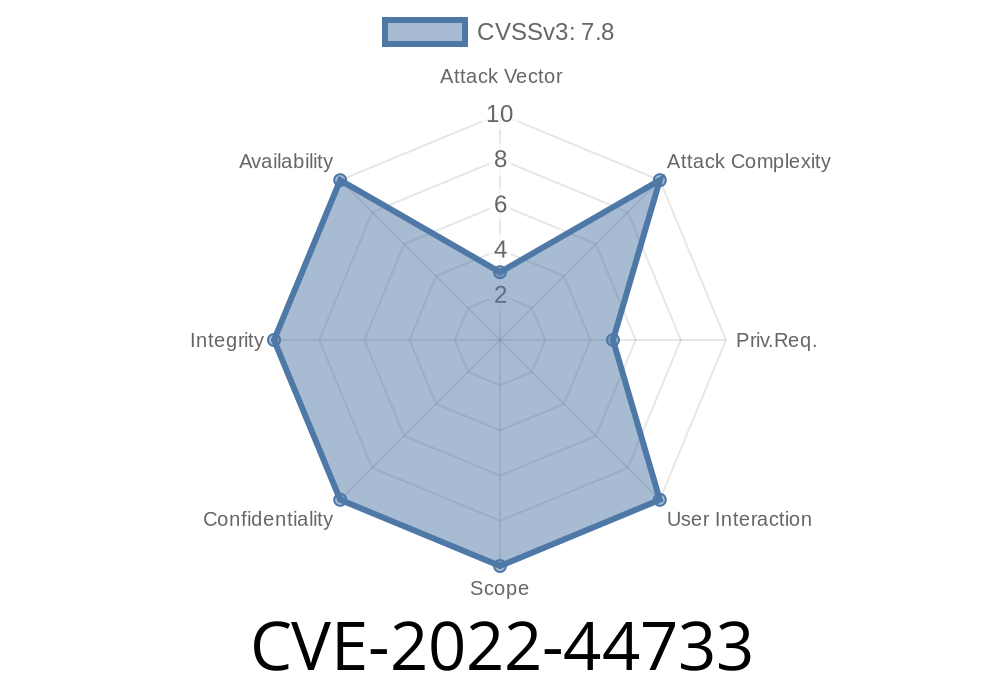A new security vulnerability has been discovered, identified as CVE-2022-44733, which affects Acronis Cyber Protect Home Office, specifically for Windows users. This vulnerability enables local privilege escalation due to insecure folder permissions, potentially allowing an attacker to gain unauthorized system access and execute malicious operations.
This post dives into the details of this vulnerability, the affected products, code snippets demonstrating potential exploitations, and references to original sources. The aim is to provide comprehensive information to users, administrators, and developers who might be affected by this vulnerability or who would like to learn more about it.
Acronis Cyber Protect Home Office (Windows) before build 39900
If you are using the affected version, it is highly recommended to update your software to build 39900 or later to avoid possible exploits.
Exploit Details
The main issue behind CVE-2022-44733 is that the Acronis Cyber Protect Home Office application creates specific folders with insecure permissions, which can be exploited by an attacker with low-level access to the system (such as a standard user account) to escalate their privileges and execute code at a higher privilege level.
Here's a basic code snippet demonstrating the insecure folder creation
// Insecure folder creation code
CreateDirectory("C:\\ProgramData\\Acronis\\CyberProtectHomeOffice\\", NULL);
The code snippet above creates a folder without specifying any additional security attributes (NULL), leading to the folder having weak permissions. This enables a low-privileged attacker to gain unauthorized access to the folder, modify or replace its contents, and potentially execute malicious code as a higher-privileged user.
References
The information about CVE-2022-44733 and the disclosure of this vulnerability is available in the following original sources:
1. CVE Details - CVE-2022-44733
2. Acronis Cyber Protect Home Office - Security Advisory
Mitigation
To mitigate the risks associated with CVE-2022-44733, users and administrators of Acronis Cyber Protect Home Office should take the following steps:
1. Update the software to the latest version (build 39900 or newer) to address the insecure folder permissions issue.
2. Review and adjust folder permissions on your system to ensure only authorized users have access to sensitive folders and resources.
3. Monitor your system logs and security alerts to detect and respond to potential threats and unauthorized activities.
Conclusion
Local privilege escalation vulnerabilities, such as CVE-2022-44733, can pose serious threats to the security and integrity of your system. It is crucial for users, administrators, and developers to stay informed about such vulnerabilities, apply necessary patches, and be proactive in securing their systems. With proper security measures in place, the risks associated with such vulnerabilities can be significantly reduced.
Timeline
Published on: 11/07/2022 19:15:00 UTC
Last modified on: 11/08/2022 19:09:00 UTC
